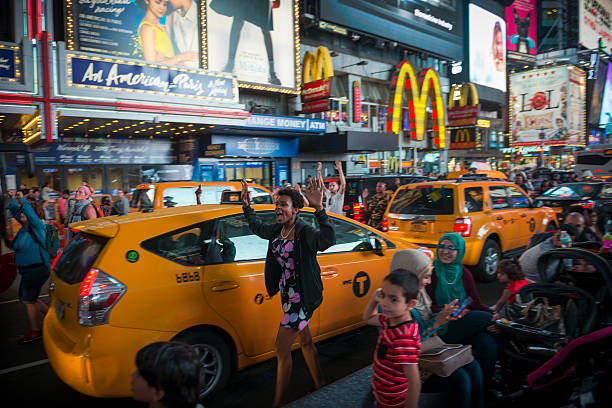
McDonald’s, one of the world’s leading fast-food chains, has consistently demonstrated its ability to innovate and adapt to changing market trends. The company’s marketing strategies are a testament to its forward-thinking approach, allowing it to stay ahead of the competition and maintain its global dominance. This article explores some of McDonald’s most innovative marketing strategies and how they have helped the brand stay ahead of the curve.
1. Embracing Digital Transformation
Mobile Apps and Digital Ordering
McDonald’s has embraced digital transformation by developing and enhancing its mobile app. The app allows customers to place orders, make payments, and access exclusive deals and promotions. Features like mobile ordering and curbside pickup have made the dining experience more convenient, especially during the COVID-19 pandemic.
Self-Service Kiosks
To improve the in-store experience, McDonald’s has introduced self-service kiosks in many of its locations. These kiosks enable customers to customize their orders, reducing wait times and increasing order accuracy. The kiosks also provide an opportunity to upsell additional items, boosting average transaction values.
2. Leveraging Social Media
Engaging Content and Campaigns
McDonald’s has effectively used social media platforms like Instagram, Twitter, and Facebook to engage with its audience. The company creates interactive and engaging content, including behind-the-scenes videos, user-generated content, and interactive polls. Social media campaigns like #McDStories and #FollowTheArch have successfully captured the attention of customers and created buzz around the brand.
Influencer Collaborations
Collaborating with influencers and celebrities is another key strategy McDonald’s employs to reach a broader audience. Partnerships with popular figures like Travis Scott and BTS have resulted in highly successful campaigns, driving traffic to McDonald’s restaurants and creating a cultural phenomenon.
3. Personalization and Customer Engagement
Loyalty Programs
McDonald’s has introduced loyalty programs to reward its customers and encourage repeat business. The MyMcDonald’s Rewards program allows customers to earn points on their purchases, which can be redeemed for free food and beverages. This program not only enhances customer satisfaction but also provides valuable data on customer preferences and behavior.
Personalized Marketing
By leveraging data analytics, McDonald’s can deliver personalized marketing messages and offers to its customers. Personalized email campaigns, targeted ads, and customized promotions based on customer preferences help increase engagement and drive sales.
4. Sustainability and Social Responsibility
Sustainable Practices
McDonald’s commitment to sustainability and social responsibility is a key aspect of its marketing strategy. The company has implemented various initiatives to reduce its environmental footprint, such as sourcing sustainable ingredients, minimizing packaging waste, and using energy-efficient equipment. These efforts are communicated through marketing campaigns that highlight McDonald’s dedication to sustainability.
Community Engagement
McDonald’s actively engages with local communities through programs like Ronald McDonald House Charities and sponsorship of local events and sports teams. These initiatives help build strong relationships with customers and enhance the brand’s reputation as a socially responsible company.
5. Menu Innovation and Limited-Time Offers
New Product Launches
Innovation in menu offerings is a cornerstone of McDonald’s marketing strategy. The company regularly introduces new products and limited-time offers (LTOs) to keep the menu fresh and exciting. Items like the McPlant burger and various regional specialties cater to evolving customer tastes and preferences.
Limited-Time Offers
LTOs create a sense of urgency and exclusivity, encouraging customers to visit McDonald’s more frequently. Collaborations with popular brands and celebrities for special meals, such as the Travis Scott Meal and the BTS Meal, have generated significant buzz and increased sales.
6. Experiential Marketing
Pop-Up Events and Installations
McDonald’s uses experiential marketing to create memorable experiences for its customers. Pop-up events, interactive installations, and unique dining experiences help generate excitement and media coverage. These events often tie in with product launches or promotional campaigns, enhancing their impact.
Virtual and Augmented Reality
Embracing cutting-edge technology, McDonald’s has experimented with virtual and augmented reality experiences. These interactive campaigns engage customers in new and exciting ways, creating a lasting impression and driving brand loyalty.
7. Global and Localized Campaigns
Global Consistency
While McDonald’s maintains a consistent global brand image, it also tailors its marketing strategies to fit local cultures and preferences. Global campaigns like “I’m Lovin’ It” are adapted to resonate with regional audiences, ensuring relevance and effectiveness.
Localized Marketing
Localized marketing efforts involve creating campaigns that reflect the unique tastes and cultural nuances of different markets. For example, McDonald’s offers menu items that cater to local preferences, such as the McAloo Tikki in India and the Teriyaki Burger in Japan. These localized offerings are supported by targeted marketing campaigns that highlight the connection between McDonald’s and the local community.
Conclusion
McDonald’s innovative marketing strategies have played a crucial role in its ability to stay ahead of the curve in the fast-food industry. By embracing digital transformation, leveraging social media, personalizing customer engagement, committing to sustainability, innovating the menu, creating experiential marketing campaigns, and balancing global consistency with localized efforts, McDonald’s continues to capture the hearts and minds of consumers worldwide. These strategies not only drive brand success but also ensure that McDonald’s remains a relevant and beloved brand in an ever-evolving market.
FAQs
Q: How has McDonald’s used digital transformation to enhance customer experience?
A: McDonald’s has developed a mobile app for digital ordering and payments, introduced self-service kiosks for in-store customization and convenience, and leveraged data analytics for personalized marketing.
Q: What role do social media and influencers play in McDonald’s marketing strategy?
A: Social media platforms are used to create engaging content and interactive campaigns, while collaborations with influencers and celebrities help McDonald’s reach broader audiences and generate buzz around new offerings.
Q: How does McDonald’s incorporate sustainability into its marketing efforts?
A: McDonald’s highlights its commitment to sustainability through campaigns focused on sourcing sustainable ingredients, reducing packaging waste, and implementing energy-efficient practices. These efforts are communicated to build trust and loyalty among environmentally conscious consumers.
Q: What are some examples of McDonald’s experiential marketing efforts?
A: McDonald’s uses pop-up events, interactive installations, and virtual and augmented reality experiences to create memorable customer interactions. These efforts generate excitement, media coverage, and lasting brand impressions.